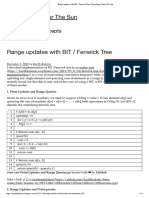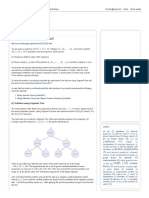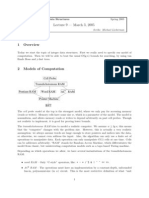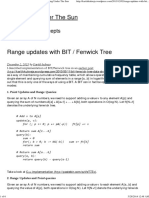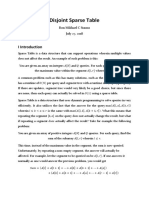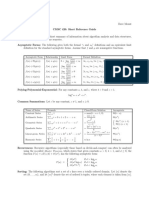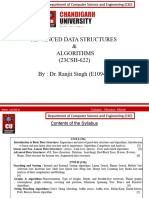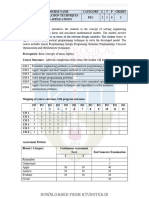0% found this document useful (0 votes)
45 views16 pagesLecture 13
The document discusses range query problems and data structures used to solve them efficiently, namely sparse tables and Fenwick trees. Sparse tables allow finding the maximum/minimum/sum in a range of values in O(1) time after an O(n log n) preprocessing step. They work for immutable data but not updates. Fenwick trees support finding the sum in a range in O(log n) time and updates in O(log n) time using only O(n) space. The key ideas behind both are representing a range as a union of smaller sub-ranges and precomputing the answers for sub-ranges of specific sizes.
Uploaded by
Hasan ShahriarCopyright
© © All Rights Reserved
We take content rights seriously. If you suspect this is your content, claim it here.
Available Formats
Download as PDF, TXT or read online on Scribd
0% found this document useful (0 votes)
45 views16 pagesLecture 13
The document discusses range query problems and data structures used to solve them efficiently, namely sparse tables and Fenwick trees. Sparse tables allow finding the maximum/minimum/sum in a range of values in O(1) time after an O(n log n) preprocessing step. They work for immutable data but not updates. Fenwick trees support finding the sum in a range in O(log n) time and updates in O(log n) time using only O(n) space. The key ideas behind both are representing a range as a union of smaller sub-ranges and precomputing the answers for sub-ranges of specific sizes.
Uploaded by
Hasan ShahriarCopyright
© © All Rights Reserved
We take content rights seriously. If you suspect this is your content, claim it here.
Available Formats
Download as PDF, TXT or read online on Scribd
/ 16



